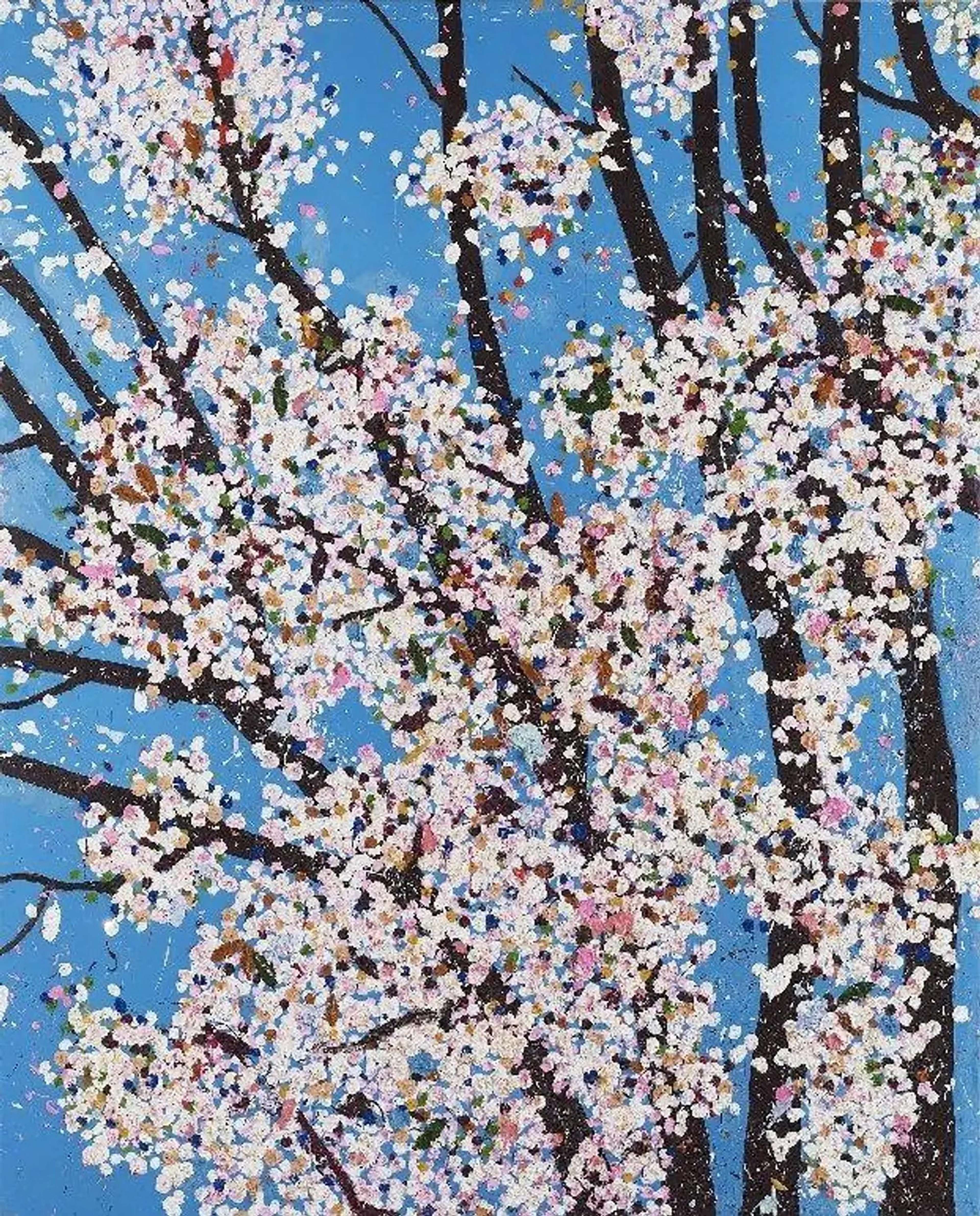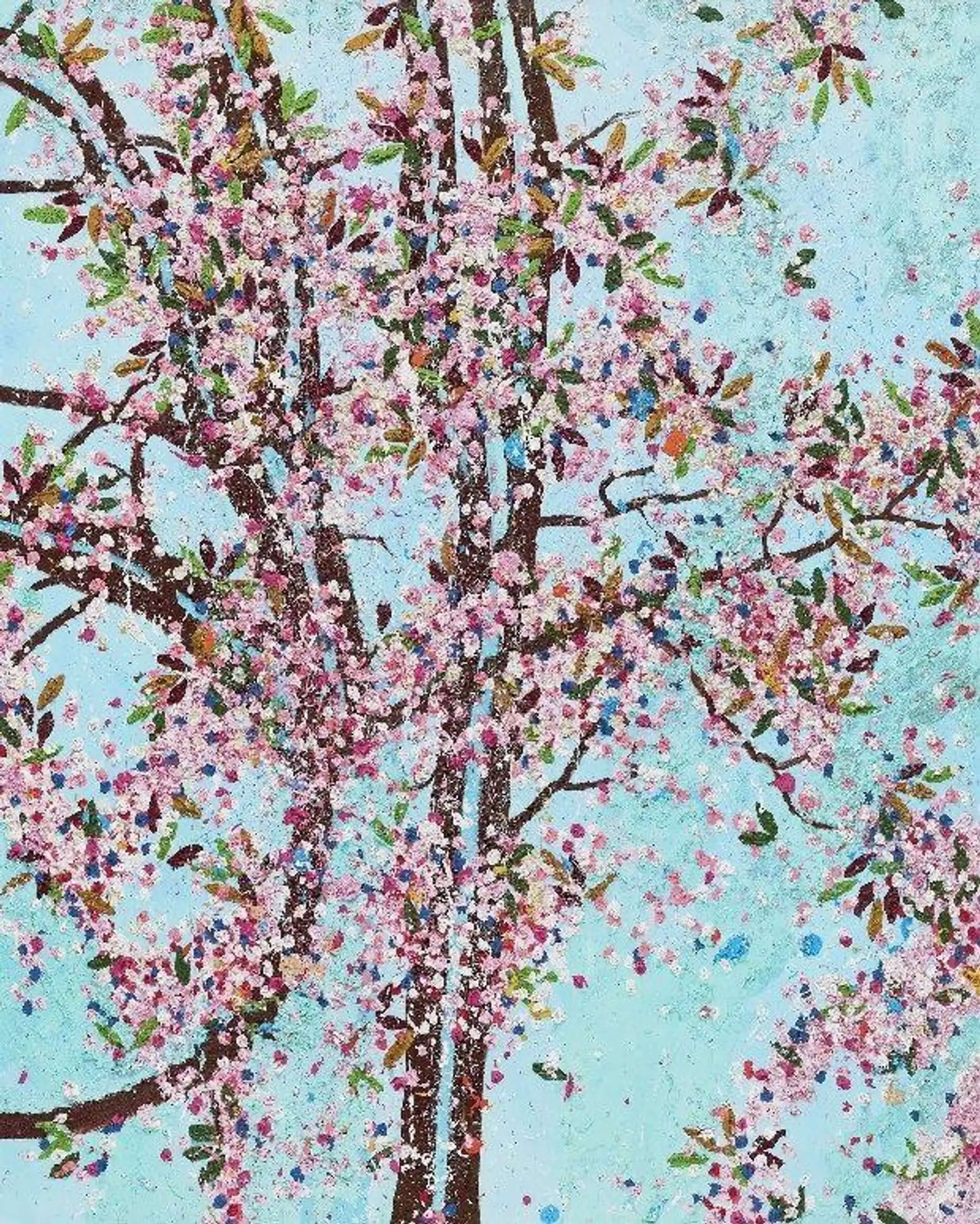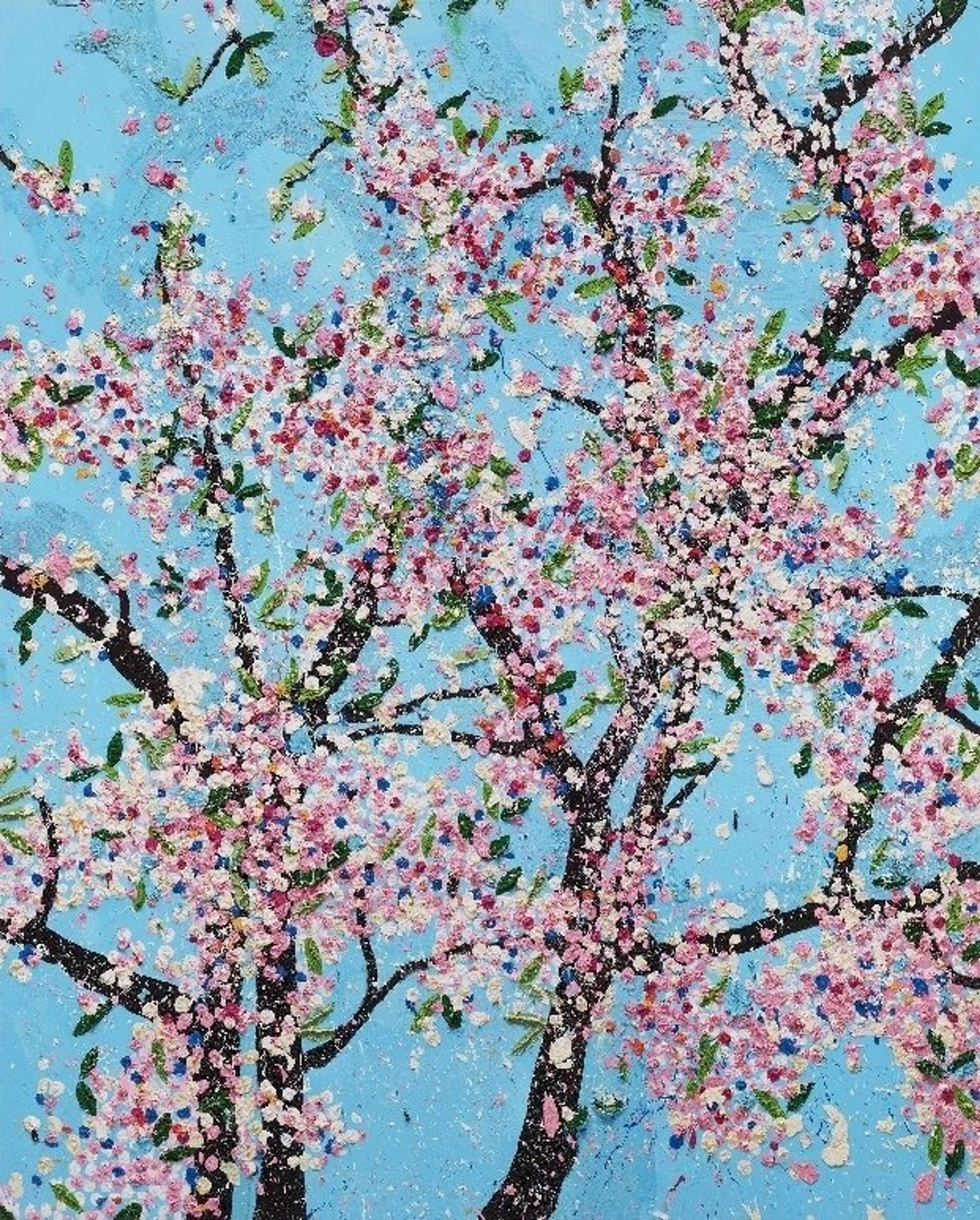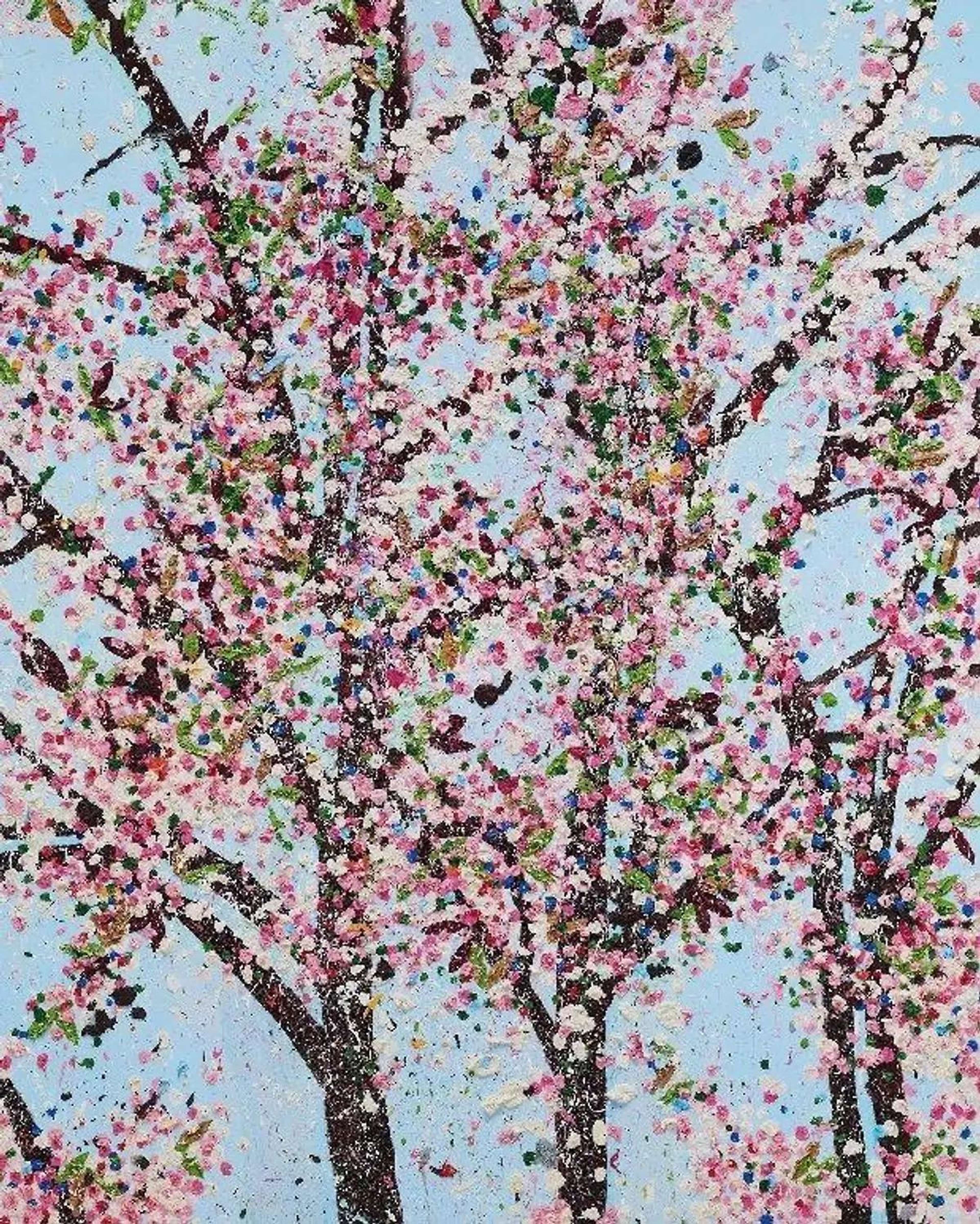 H9 The Virtues Portfolio © Damien Hirst 2021
H9 The Virtues Portfolio © Damien Hirst 2021
Damien Hirst
677 works
Damien Hirst, the enfant terrible of the Young British Artists, is best known for his macabre object artworks about death. H9 The Virtues marks a decisive shift for Hirst, and presents the artist's desire for beauty and hope.
H9 The Virtues reveals Hirst's interest in vanitas paintings.
 H9-1 Justice © Damien Hirst 2021
H9-1 Justice © Damien Hirst 2021Traditionally in art history, flowers were used to represent the fleeting impermanence of life, and as a reminder of our own mortality. Of his cherry blossom paintings, Hirst said "these prints are about the momentary, the insane transience of beauty". For Hirst, the cyclical life of the cherry blossom tree is a poignant reminder of the passage of time and the constant renewal of life.
Hirst's cherry blossoms are inspired by his childhood.
 H9-2 Courage © Damien Hirst 2021
H9-2 Courage © Damien Hirst 2021From a very young age, Hirst watched his own mother paint cherry blossom trees in full bloom. As a boy, Hirst was enchanted by the cherry blossom tree planted outside of his childhood bedroom window in Devon, giving this series an uncharacteristic sentimentality for Hirst.
Cherry blossoms symbolise the brevity of time.
 H9-3 © Damien Hirst 2021
H9-3 © Damien Hirst 2021For Hirst, the cherry blossom tree is a way to measure the passing of time. As the artist recalled, "For a while, it became like a clock. And I kind of love it for that reason." Each year, the tree blossoms for a short window of time, then the blossom falls and the branches become bare until the next year: a beautiful way to see the years drift on.
The series is an homage to Japanese culture.
 H9-4 © Damien Hirst 2021
H9-4 © Damien Hirst 2021The title of the series itself is a reference to the 'Eight Virtues of Bushitō', which were named by Nitobe Inazō as: courage, mercy, justice, honesty, politeness, honour, loyalty, and control. Inazō's book recorded, for Western readers, the samuri codes of ethics.
The series evolves Hirst's famous Spots paintings.
 Valium © Damien Hirst 2000
Valium © Damien Hirst 2000Hirst has produced his iconic Spots paintings since 1986. Clearly inspired by Impressionism and Pointillism, Hirst has described these paintings as being what he envisions his work to look like under a microscope. In the case of H9 The Virtues, Hirst takes the spot one step further, using the shape to delineate the petals of the blossom tree with impasto dots.
The series is part of a wider project dedicated to cherry blossoms.
 H9-5 Honesty by Damien Hirst
H9-5 Honesty by Damien HirstHirst created over 100 cherry blossom works to be exhibited at the Foundation Cartier in Paris, from July 2021 - January 2022. The sheer magnitude of paintings and prints dedicated to the cherry blossom is testament to his near obsession with the subject.
The series appeased Hirst's mother.
 H9-6 Honour © Damien Hirst 2021
H9-6 Honour © Damien Hirst 2021Throughout his artistic career, Hirst's mother has allegedly not been the biggest fan of his artwork. However, H9 The Virtues is a series Hirst anticipated she would finally appreciate, as the artist said: "When I was making the animals in formaldehyde, she said, 'Oh, there's enough horror in the world, can't you do paintings of flowers?' And I think, my God, it's taken me until I'm 55 before I can please her."
The series was printed during the COVID-19 pandemic.
 H9-7 Loyalty © Damien Hirst 2021
H9-7 Loyalty © Damien Hirst 2021Hirst completed his H9 The Virtues series in February 2021, during one of the UK's national lockdowns. It is perhaps unsurprising that Hirst should turn to more optimistic subject matter during this period of global unease, and he described his cherry blossoms as "bright and celebratory".
The series represents the beauty of mankind's virtues.
 H9-8 Control © Damien Hirst 2021
H9-8 Control © Damien Hirst 2021Most of Hirst's oeuvre is about life and death, reminding us of our own mortality. H9 The Virtues, on the other hand, is an optimistic celebration of the good mankind can achieve in life. As Hirst declared, "I hope that The Virtues can remind us to always try and get the most from life."
The series marks a decisive shift from Hirst's typical work.
 For The Love Of God, Wonder © Damien Hirst 2009
For The Love Of God, Wonder © Damien Hirst 2009Hirst, the enfant terrible of the YBAs, is perhaps most famous for his morbid and deathly subject matter. Works like For The Love Of God are a macabre reminder of our own mortality. H9 The Virtues contrarily expresses the beauty and opportunities of life, in a light and airy flurry of pink, white and blue.

